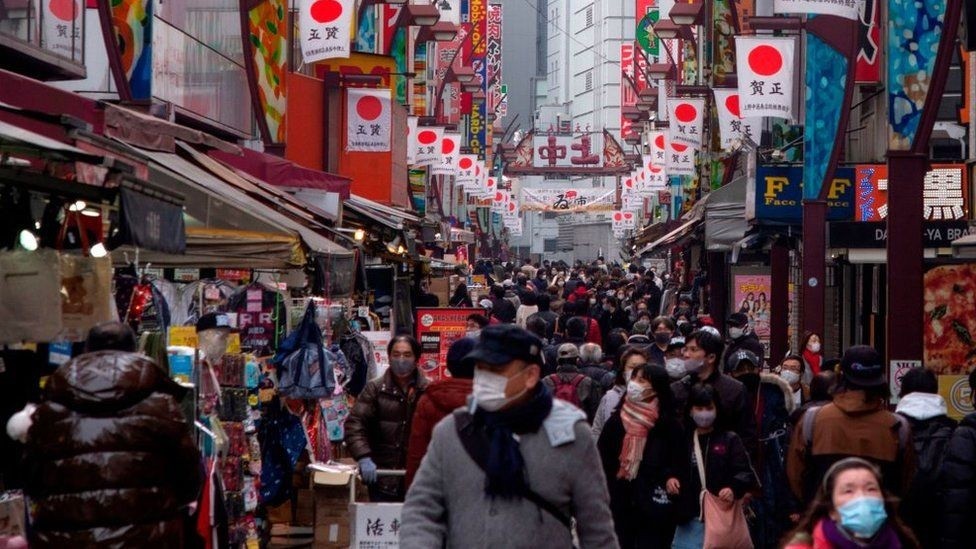Japan’s economy rebounds on solid spending, Omicron clouds outlook

Japan’s economy rebounded in the final three months of 2021 as falling coronavirus cases helped prop up consumption, though rising raw material costs and a spike in new Omicron variant infections cloud the outlook.
Bank of Japan Governor Haruhiko Kuroda also highlighted escalating tensions in Ukraine as a fresh risk to the central bank’s forecast for a moderate economic recovery.
The world’s third-largest economy expanded an annualised 5.4% in October-December after contracting a revised 2.7% in the previous quarter, government data showed on Tuesday, falling short of a median market forecast for a 5.8% gain.
Some analysts expect the economy to slump again in the current quarter as rising COVID-19 cases keep households from shopping and supply chain disruptions hit factory output.
“The economy will likely stall in January-March or it could even contract, depending on how the Omicron variant affects service-sector consumption,” said Takeshi Minami, chief economist at Norinchukin Research Institute.
Economic growth was driven largely by a 2.7% quarter-on-quarter rise in private consumption, which accounts for more than half of Japan’s gross domestic product (GDP).
The expansion in consumer spending, which was bigger than market forecasts for a 2.2% gain, came after Japan ended coronavirus curbs in October.
Capital expenditure also rose 0.4%, roughly in line with market forecasts. External demand added 0.2% point to growth, a sign exports continued to benefit from the global recovery.
“As the economy re-opened, service consumption, such as for hotels, restaurants and entertainment, got a big boost,” said Wakaba Kobayashi, an economist at Daiwa Institute of Research.
Japan’s recovery, however, continues to lag other advanced economies, forcing the BOJ to keep monetary policy ultra-loose, even as other central banks eye interest rate hikes.
The country’s seasonally-adjusted real GDP, sized around 541 trillion yen ($4.69 trillion), remains below the pre-pandemic level of late 2019.
“The economy’s recovery could delay into later this year as the Ukraine crisis may drive up fuel costs and dampen corporate appetite for capital expenditure,” he said.
“There’s not much left for the government and the central bank to do in terms of new stimulus measures. Both fiscal and monetary policy have reached a limit.”










